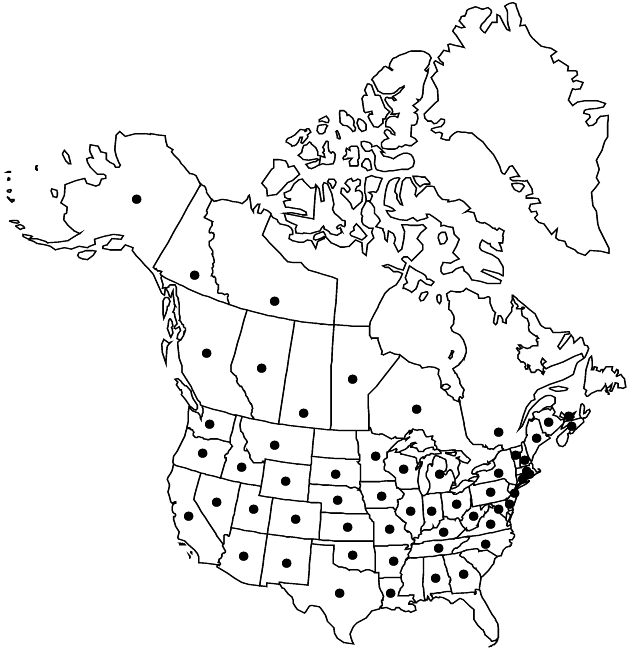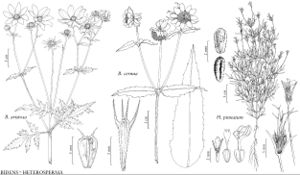Bidens cernua
Sp. Pl. 2: 832. 1753.
Annuals, (2–) 20–100 (–400+) cm (stems sometimes rooting at proximal nodes). Leaves (rarely in 3s) sessile; blades lanceovate or oblanceolate to lanceolate or linear, 40–100 (–200+) × (2–) 5–25 (–45+) mm, bases cuneate to rounded, margins usually coarsely dentate to serrate, sometimes entire, sometimes ciliate, apices acute to acuminate, faces glabrous. Heads (erect or nodding at flowering, usually nodding in fruit) borne singly or in open, ± corymbiform arrays. Peduncles 10–40 (–100+) mm. Calyculi of (3–) 5–8 (–10) spreading to reflexed, oblong to lance-linear, often ± foliaceous bractlets or bracts (3–) 8–12 (–25+) mm, margins usually ciliate, abaxial faces usually glabrous, bases sometimes hispidulous. Involucres ± hemispheric or broader, (3–) 6–10 × (8–) 12–20+ mm. Phyllaries 6–8+, ovate or lanceovate to lanceolate, 2–10 mm. Ray-florets usually 6–8, sometimes 0; laminae orange-yellow, 2–15 (–18) mm. Disc-florets (10–) 40–100 (–150+); corollas orange-yellow, 3–4 mm. Cypselae blackish or brown, usually ± flattened, sometimes ± 4-angled, ± cuneate, outer (3–) 5–6+ mm, inner 4–8 mm, margins (± thickened or winged) retrorsely ciliate, apices ± truncate to convex, faces ± striate, glabrous or tuberculo-strigillose; pappi of (2–) 4, ± erect, retrorsely barbed awns (1–) 2–4 mm. 2n = 24, 48.
Phenology: Flowering late (Jul–)Aug–Sep(–Oct).
Habitat: Swamps, marshes, peat and sedge bogs, flood plains
Elevation: 0–2300 m
Distribution

Alta., B.C., Man., N.B., N.W.T., N.S., Ont., P.E.I., Que., Sask., Yukon, Ala., Alaska, Ariz., Ark., Calif., Colo., Conn., Del., D.C., Ga., Idaho, Ill., Ind., Iowa, Kans., Ky., La., Maine, Mass., Mich., Minn., Mo., Mont., Nebr., Nev., N.H., N.J., N.Mex., N.Y., N.C., Ohio, Okla., Oreg., Pa., R.I., S.Dak., Tenn., Tex., Utah, Vt., Va., Wash., W.Va., Wis., Wyo., Europe, Asia
Discussion
Bidens cernua is used medicinally to treat urinary-tract infections.
Selected References
None.
